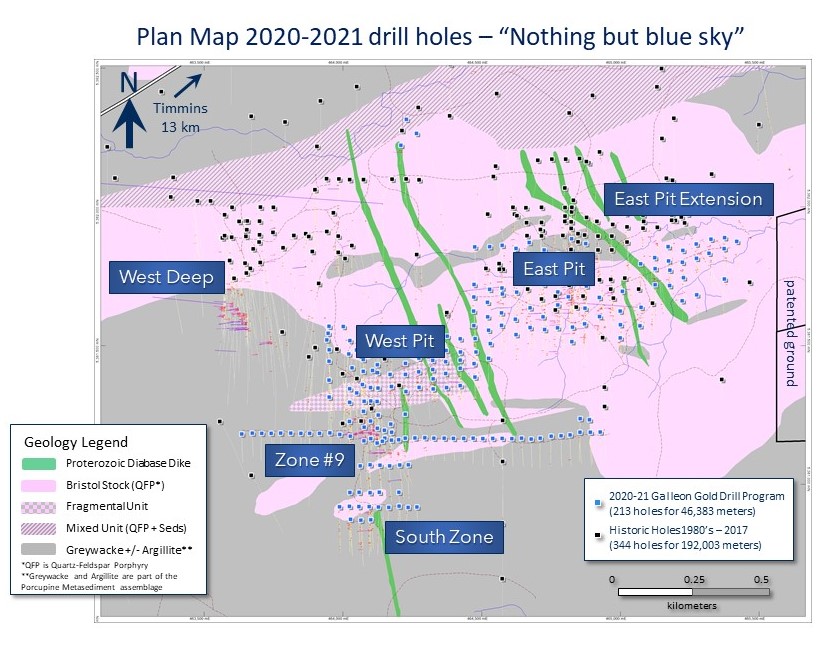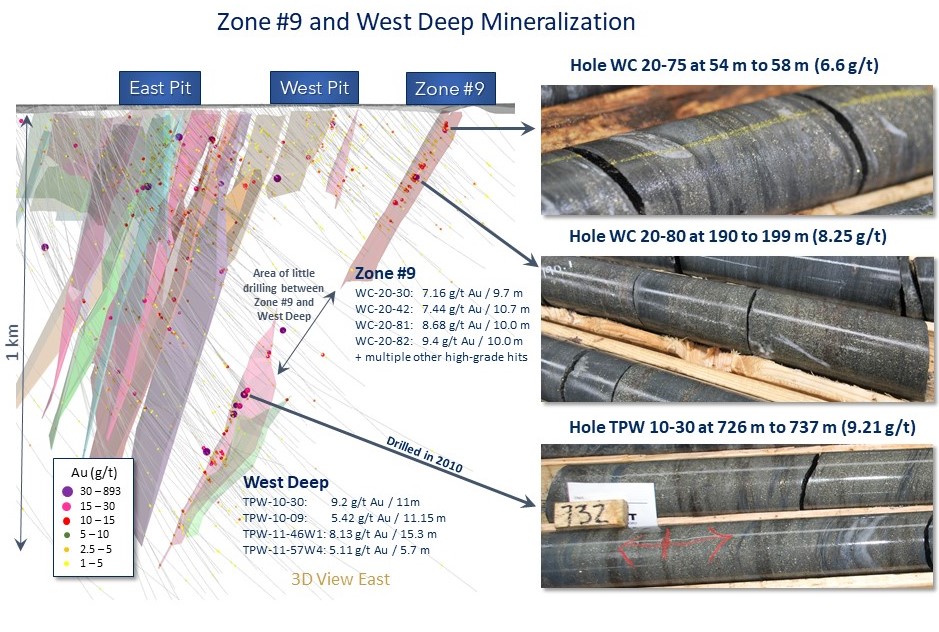Galleon Gold’s 2020-2021 drill program consisted of 46,000 meters of drilling in 213 drill holes. Exploration on the project divided into three separate phases:
- Infill drilling of known areas (East and West Pit) to support the resource update and PEA and extend margins of mineralization
- Exploration drilling focused on the new discovery Zone #9 for inclusion in PEA
- Exploration drilling focused on the new discovery South Area

Discovery of New High-Grade Zone (Zone #9) - select drill highlights
- WC-20-30: 7.16 g/t Au over 9.7 m including sub-interval of 14.75 g/t Au over 3.0 m
- WC-20-31: 5.87 g/t Au over 8.5 m including a sub-interval of 2.0 m at 10.1g/t Au
- WC-20-42: 7.44 g/t Au over 10.7 m including a sub-interval of 10.19 g/t Au over 2.9 m
- WC-20-81: 8.68 g/t Au over 10.0 m including a sub-interval of 12.04 g/t Au over 2.0 m
- WC-20-80: 8.25 g/t Au over 9.0 m including a sub-interval of 19.7 g/t Au over 1.0 m
Why Zone #9 is significant:
The location and orientation of Shear Zone #9 up-dip from the West Deep area discovered in 2010, suggests that the recently discovered Zone #9 mineralization may be linked to the West Deep. Geologic similarities linking the new discovery to the much deeper West Deep zone, include:
- host rock lithology
- a strong sulfide association
- similar gold grades and widths


